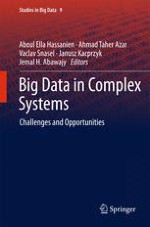2015 | OriginalPaper | Buchkapitel
Modified Soft Rough Set Based ECG Signal Classification for Cardiac Arrhythmias
verfasst von : S. Senthil Kumar, H. Hannah Inbarani
Erschienen in: Big Data in Complex Systems
Aktivieren Sie unsere intelligente Suche, um passende Fachinhalte oder Patente zu finden.
Wählen Sie Textabschnitte aus um mit Künstlicher Intelligenz passenden Patente zu finden. powered by
Markieren Sie Textabschnitte, um KI-gestützt weitere passende Inhalte zu finden. powered by
The objective of the present study is ECG signal classification for cardiac arrhythmias. Most of the pattern reorganization techniques involve significantly large amounts of computation and processing time for extracting the features and classification. Electrocardiogram (ECG) is the P, QRS, T wave demonstrating the electrical activity of the heart. Electrocardiogram is the most straightforwardly accessible bioelectric signal that provides the doctors with reasonably accurate data regarding the patient’s heart disorder. Many of the cardiac problems are visible as distortions in the electrocardiogram (ECG). Different heart diseases are with different ECG wave shapes; in addition, there is large numbers of heart illnesses, so it is hard to accurately extract cardiology features from diverse ECG wave forms. Big Data is now rapidly expanding in all science and engineering domains, including physical, bio-medical and social sciences. It is used to build computational models directly from large ECG data sets. Rough set rule generation is specifically designed to extract human understandable decision rules from nominal data. Soft rough set theory is a new mathematical tool to deal uncertainty. Five types of rhythm including Normal Sinus Rhythm (NSR), Premature Ventricular Contraction (PVC), Left Bundle Branch Block (LBBB), Right Bundle Branch Block (RBBB) and Paced Rhythm (PR) are obtained from the MIT-BIH arrhythmia database. Five morphological features are extracted from each beat after the preprocessing of the selected records. In this chapter, the ECG signals were classified using Modified soft rough set technique. The empirical analysis shows that the proposed method shows better performance compared to the other six established techniques like Back Propagation Neural Network, Decision table, J48, JRip, Multilayer Perceptron and Naive Bayes. This chapter is focused on finding an easy but reliable features and best MSR structure to correctly classify five different cardiac conditions.
